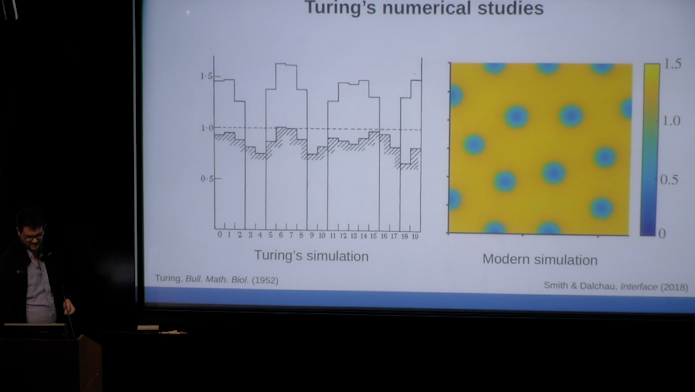Flatiron Institute Seminar Series: Pearson Miller
Title: Controlling biochemical pattern formation
Abstract: It is the central problem of developmental biology to understand multicellular organisms’ struggle in the face of entropy to grow from simple to progressively more complex forms. How does an embryo know what shape to become, and how does it reliably become that? One of the ancient and recurrent themes running through investigations of this question is a dialectic: there are models where biological patterns spontaneously form, as in the classical Turing instability, and ones where cell fates are mapped out according to a pre-existing biochemical blueprint, such as an inherited morphogen gradient.
In this talk, I will provide a brief survey of ideas of positional information and self-organization in development. At the crossroads between these two frameworks there are exciting, and quantitative, problems. In many cases, a species has evolved the capacity to develop emergent patterns in its growing tissue, through nonlinear chemical or mechanical processes, but to ensure robust outcomes still guides this process through pre-established spatial cues. To illustrate this point, I will highlight some of our recent work. First, we will examine how geometry can effectively control pattern formation on the level of a single cell, letting a cell know which way is ‘up’ in the process. Second, we will consider how morphogen gradients can modulate pattern formation in an activator inhibitor system, and why that may help animals end up with the right number of stripes.
October 7, 2022
Pearson Miller: Controlling biochemical pattern formation

By clicking to watch this video, you agree to our privacy policy.